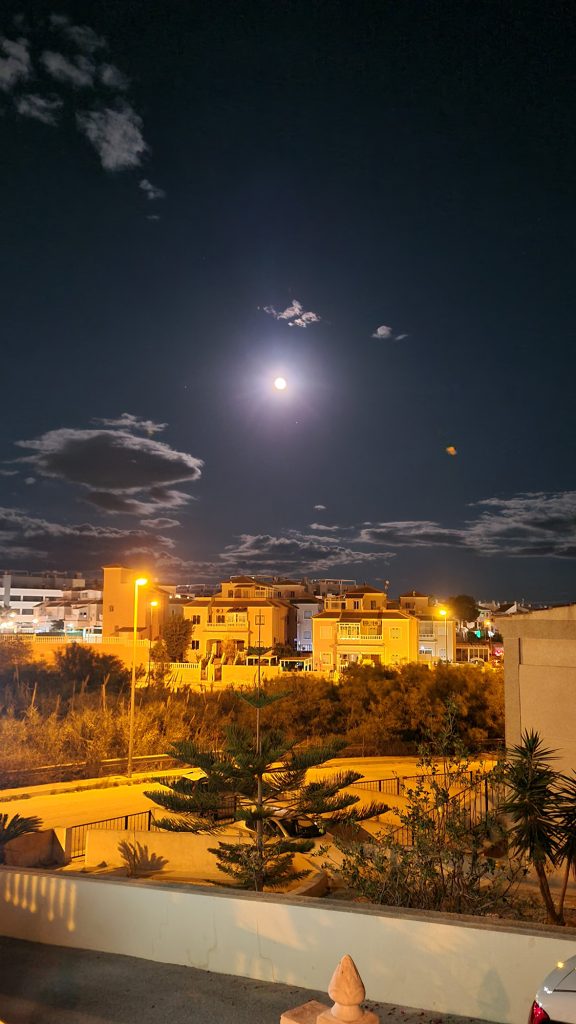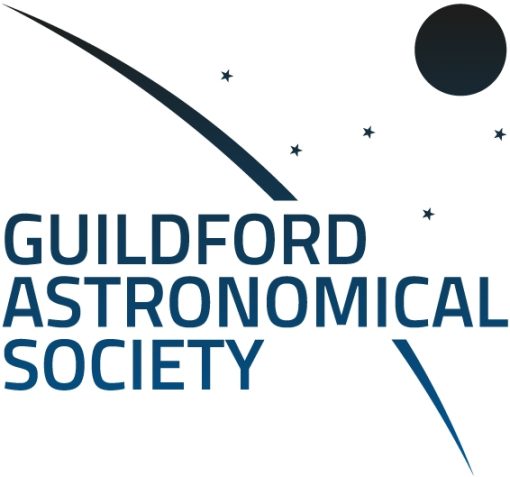National Astronomy Week 1st – 9th February 2025
Whilst this National Astronomy Week was still met with some gloom over Surrey, we did get some mildly cloudy nights making it perfect for dramatic and moody images of the Moon.
The theme for this astronomy week was Chasing The Moon and we shared some tips for lunar observation on our Instagram page @guildfordastro
You may hear astronomers talk about the Moon in frustration and for good reason, it is so bright, that it’s drowns out the fainter objects around it meaning we can’t gather data or do any astrophotography on objects within 30 degrees of the Moon.
However, as amateur astronomers and any selenophiles out there, the Moon is an object ripe for observations, imaging and there are so many learning activities you can do with children.
Observing The Moon

Here is a list of what you can observe on the Moon without needing any specialist equipment. It is still ideal to turn off any lights around you or get to somewhere dark (and safe) and spend a few minutes, ideally 20, to get fully adapted sight:
- Moon Phases






The Moon phase is noticeably changing every night. The Moon completes one orbit around the Earth every 29.5 days. Here is the terminology you might here:
New Moon: this is when the Moon is between the Earth and the Sun, so the Sun is lighting up the face on the opposite side. As the Moon is tidally locked, this is the far side of the Moon, but the side facing is always the same, even when we can’t see it. Some older almanacs and in art, this is often called the Dark Moon as we can’t see it.
Waxing Moon: this is after the New Moon phase where the Moon in the UK appears to start getting lit up from the right or the Eastern limb (when looking at the edge of planets, moons and the Sun, we refer to the circle we see of them as the disc and the edge as the limb). The part being lit up gives you an idea where the sun is.
Crescent Moon: this is the moon phase between a New Moon and the First Quarter Moon or a Last Quarter Moon. You can have a waxing crescent or a waning crescent.
First Quarter Moon: in layman’s terms this is often called the waxing half moon, but this is where the right or full Eastern half is lit up by the Sun as the Moon is now a quarter of the way around it’s orbit.
Gibbous Moon: this is the moon phase between the First Quarter Moon and the Full Moon or the Full Moon and the Last Quarter Moon.
Full Moon: this is the phase when the Moon is halfway through it’s orbit and on the opposite side of the Earth to the Sun, so the Sun side facing us is fully illuminated.
It’s fun to spend a few minutes every day, to take a minute to see how the light spreads and then recedes across the Lunar Disc. I recommend making a simple journal entry where you have a circle that you colour in to show how much of the Moon is dark or lit up.
- Earthshine

When the Moon is in a crescent phase, particularly shortly after Sunset or before Sunrise, you can see the dark portion of the face is lightly visible and this twice reflected sunlight, reflected off the Earth onto the Moon and then reflected off the Moon for us to see it.
- The Terminator

This is the area between the day (the lit up-side) and night (dark side) of the Moon that we see move along the disc throughout the month. Along this area you can see some more texture because the light creates dramatic shadows along the craters. This can help observers get a good feel for the lunar surface and often looks more 3D than a Full Moon, where the Moon is so bright, it drowns out all light over the crater shadows.
- The Maria



These are the dark patches you can see after your eyes have settled. These areas were caused by deep impacts earlier in the Moon’s history, that caused the Moon to be re-vulcanised and these lava beds eventually cooled into the seas we see today made of basalt.
- Tycho Crater
This is the large bright crater on the Southern part. Craters are caused by impactors that melt the surface of the Moon to create a ripple that solidifies, and the rebound of the ripple will freeze into a central peak.
These craters are well preserved as the Moon has no active vulcanism and no atmospheric weathering, so the only changes are made from other impactors, or humans making changes.
- Lunar Halos
When there are ice crystals, and sometimes pollution caused by forest fires in the US and Canada, they can cause 22 degree halos around the Moon.
- Paraselene (or Paraselenae plural)
A member of the halo family, these are faint patches or light on one or both sides of the Moon at around 22 degrees. These are also known as Moon dogs and the Moon needs to be fairly bright for this to happen.
- Lunar Eclipses



This is where not only is it a full moon, but the Moon passes into the Earth’s shadow. It can sometimes transit into the area where the Earth’s atmosphere splits out the sun’s light and as it shifts into the redder area, it looks red or orange, often called a Blood Moon, inspiring myths around the world.
There are also partial lunar eclipses where the Earth’s shadow across the Full Moon looks like someone took a bite out of it, so these are known as cookie bite eclipses.
- Solar Eclipses
Whilst the focus of this is the Sun, the Moon is the one creating the show here. For a full Solar Eclipse, we see the Moon transit the Sun, creating Bailey’s beads and then the diamond ring before totality which can be a magical and thrilling experience.
Annular eclipses, when the Moon is closer to the Earth and so we get this ring of fire effect are great for getting a feel of the ruggedness of the Moon. Using properly safety verified and checked solar glasses and cameras you can take images or view the eclipse and see craters outlines along the limb, lit up by the Sun.
Important Never look directly at the Sun unless it is a full eclipse in totality. Use eclipse glasses that are ISO accredited 12312-2 and check you know how to use solar filters on your optics before each use.
Some Fun Lunar Activities for Adults & Children Alike
Moon Myths:
Researching different stories and myths around the Moon. Every culture has an origin story for how the Moon came into being and it’s a beautiful way to explore the links between astronomy and culture.
Crater names:



Each crater was named after a scientist, and it can be fun to see who they were and what they contributed to our knowledge today.
The Moon Landing Sites:
You can look up the story of the Apollo missions and even the recent non-human moon landings and find the sites, why missions were sent there and what happened.
Astrophotography
Imaging the Moon is a surprising challenge as I am sure you will have noticed when the Moon looks incredible and the minute you use your phone you get an overexposed white blob. Some tips on modern phones is to turn down the exposure go to video mode and do a screenshot (works better on newer models).
However, DSLRs are a great option and now, there are a number of smart scopes that do beautiful lunar photography. Some smart scopes and even bridge cameras will zoom into lunar craters.
Advanced Optics
Binoculars are great for observing the Moon in more detail as are some telescopes. If you are interested in getting a telescope, we recommend joining the society so you can come along to our group observing nights and see what scopes our members use and you can decide what is right for you. Otherwise, the question of “what scope should I get?” Is like asking someone “what car should I get?” Budget, portability, ease of use, viewing vs imaging, tracking, and what you want to see are all going to affect the answer.
Our members have been sending in Moon photos and art, you can check them out on the gallery.



Comments are closed